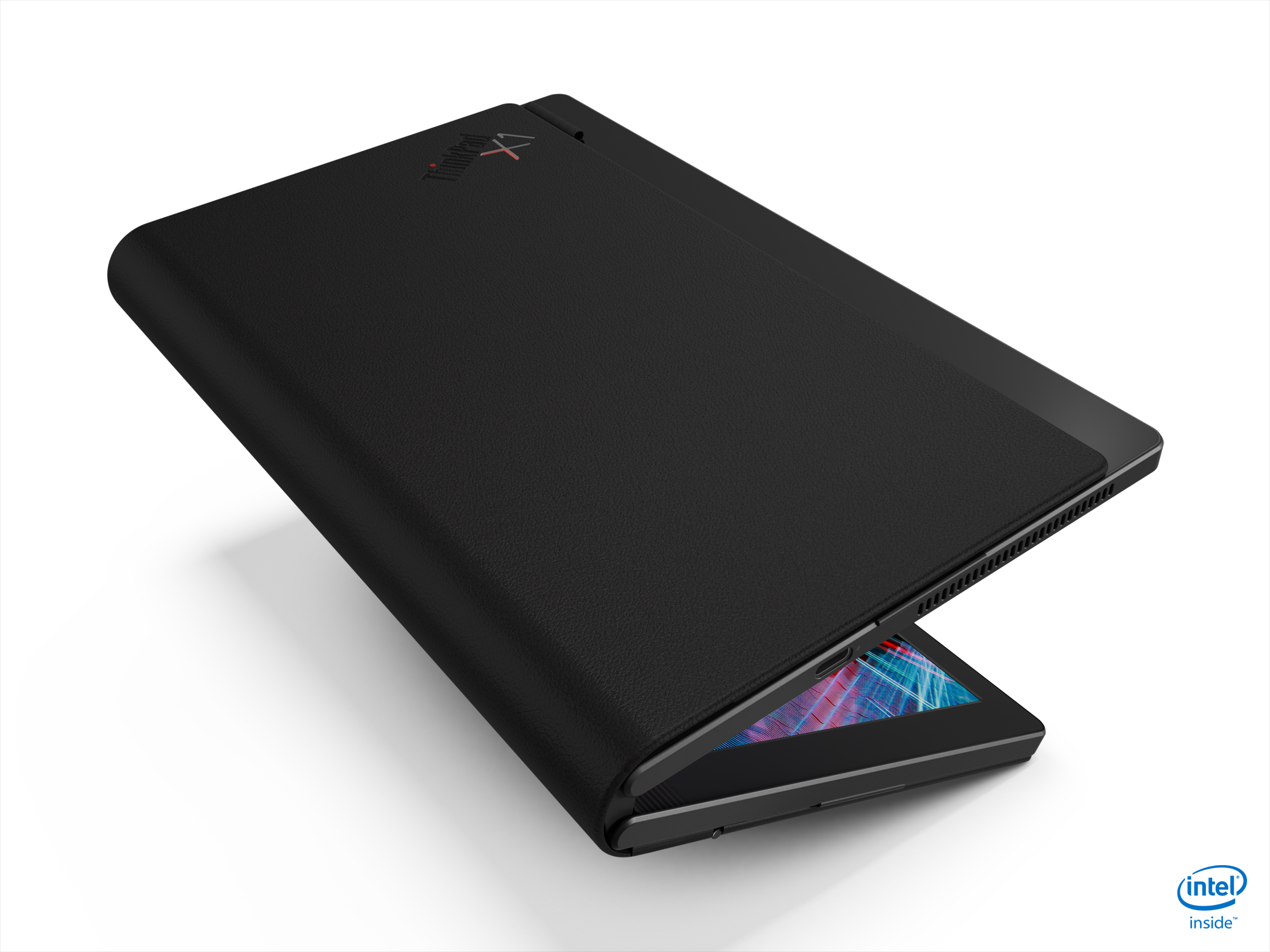Lenovo ThinkPad X1 Fold Has a 13.3-Inch Foldable OLED Screen
Know when to fold ‘em.
Lenovo’s foldable laptop is here at CES 2020 with a price and final specs. The laptop, which we first saw in a prototype stage back in May is dubbed the ThinkPad X1 Fold. It will start at $2,499 in mid-2020 using Intel Hybrid technology and Windows 10 Pro.
Lenovo ThinkPad X1 Fold Specs
| CPU | Intel Core Processor with Intel Hybrid Technology |
|---|---|
| Graphics | Integrated Intel Gen11 Graphics |
| RAM | 8GB LPDDR4x 4,267 MHz |
| Storage | Up to 1TB PCIe NVMe M.2 SSD |
| Display | 13.3-inch Flexible OLED 4:3 (2048 x 1536 resolution) |
| Connectivity | 802.11ax, Bluetooth 5.0, optional LTE, 5G |
| Battery | 50Wh (estimated 11 hours) |
| Camera | 5MP, infrared (IR) |
| Starting Price | $2,499.99 |
The foldable has a flexible 13.3-inch OLED screen from LG display with a 4:3 aspect ratio. Lenovo says the screen has gone through some serious durability testing. The hinge uses a multi-link torque design that the company claims help manage stress on the display, and that the hinge, along with a carbon fiber frame plate helps keep the screen flat. Effectively, Lenovo is saying it’s done the testing that plagued the first-gen Samsung Galaxy Fold bendable screen smartphone. Since the two share a name, let’s hope this holds up (folds up?) better. Lenovo seems confident, and said the MIL-SPEC tested design should hold up to at least as many folds as it's regular laptops.
It’s a luxurious design, with leather covering a carbon fiber device. That, along with its price, suggest that this device may be limited to the C-Suite, at least for now.
Lenovo is going to ship the ThinkPad X1 Fold with Windows 10 Pro, rather than Windows 10X, the version of Windows that Microsoft is working on specifically for folding PCs. A separate version with Windows 10X will ship at a later date, but it’s unclear if those who buy the Pro model will be able to switch to 10X later on. Those who want the choice should wait.
Instead, Lenovo has developed its own software, Lenovo Mode Switcher to switch between different usage modes to make the device work better than Windows 10 Pro on its own. That lives in the task bar and lets you set up apps side by side or with the Windows 10 keyboard. It seemed to work well enough, but not nearly as flexible as the idea of the OS knowing where to put windows.
As for Intel Hybrid Technology, it sounds a lot like Intel’s Lakefield tech, which it detailed here at CES last year. On that, the SoCs use Intel's 3D chip-stacking technology, code-named Foveros. This device does require a fan and has a 7W TDP. It also uses two head spreaders, one on each side of the very small motherboard.
At 2.2 pounds (1kg), the ThinkPad X1 Fold is being pitched as a go-anywhere-do-anything productivity device. It’s a tablet on the go and, in theory, a full PC at your desk.
Get Tom's Hardware's best news and in-depth reviews, straight to your inbox.
The Fold can use a Bluetooth “Mini Fold” keyboard, which can be placed on top of half the screen as if it were a laptop or used on a desk with the device opened all the way. It can be stored in the device when it’s closed, is held in place by magnets and charges wirelessly. You can also use it like a book, or even draw on it with the stylus. But both of those accessories are sold separately, and final prices weren't announced.
The keyboard felt like a necessity, as the Windows 10 virtual keyboard just doesn't cut it for real work. The keys have 1mm of travel, but they're crammed together to fit the width of the Fold in portrait mode. I can see myself having a tough time getting used to the small size. The touchpad is very small, but it uses Windows precision drivers, Lenovo told me.





The company will also sell a $24 stand, the ThinkPad X1 Fold Stand, that can hold the opened system in either landscape or portrait mode. Using that may be as close as a desktop experience as you get, short of plugging in a real monitor, keyboard and mouse. The stand has a cable guide for those peripherals, should you want a more traditional setup. If you only need it to stand one way, there’s a kickstand on the device.
We’ll have to test this out in our lab later this year to see just how useful Lenovo’s Windows 10 foldable can be, and if it's worth it's premium price.

Andrew E. Freedman is a senior editor at Tom's Hardware focusing on laptops, desktops and gaming. He also keeps up with the latest news. A lover of all things gaming and tech, his previous work has shown up in Tom's Guide, Laptop Mag, Kotaku, PCMag and Complex, among others. Follow him on Threads @FreedmanAE and BlueSky @andrewfreedman.net. You can send him tips on Signal: andrewfreedman.01

